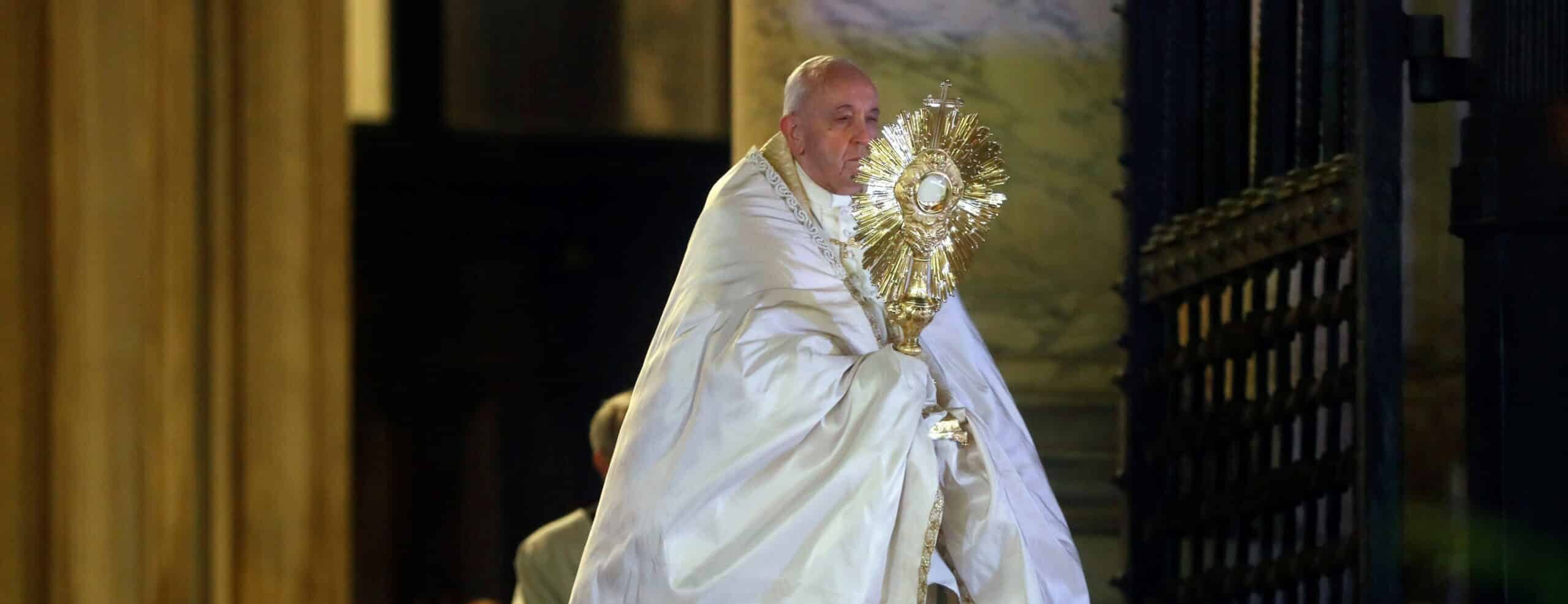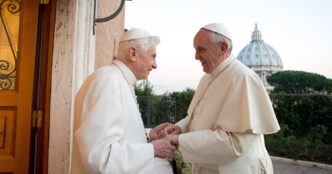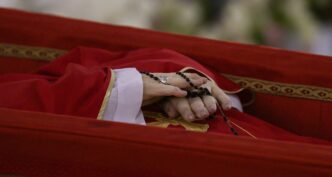When Pope Benedict XVI shocked the world with his resignation in February 2013, the Church found itself in the middle of the Year of Faith. It was a year of reflection meant to rekindle belief in a secular age. One month later, in a conclave charged with uncertainty, the College of Cardinals elected a pope who would lead the Church with a markedly different style and spirit.
And now, with the death of Pope Francis during the Jubilee Year of Hope, the symmetry is impossible to miss. If Benedict XVI was the Church’s mind — brilliant, exacting, serenely anchored in theological tradition — Francis was her heart: wounded, compassionate, audaciously open. You might say they respectively embodied faith and hope. The head and the heart.
In many ways, this juxtaposition of popes mirrors the very life of the Church. We are not a body of doctrine alone nor merely a community of love — we are both. And Pope Francis, the first Jesuit and the first Latin American pontiff, made it his mission to ensure that no one forgot the mercy of God pulsing at the heart of our faith.
A heart that listens
One moment captures this mission with piercing clarity: In July 2013, during his first major apostolic journey as pontiff, Pope Francis shook things up at World Youth Day in Rio de Janeiro. Amid the packed schedule of the international gathering, he delivered an impromptu address to approximately 30,000 young Argentinians gathered at Rio’s cathedral. In this heartfelt encounter, he urged them to “make a mess” — a call to invigorate the Church by challenging complacency and reaching out to the marginalized.
“I want the Church to go out onto the streets,” he proclaimed, emphasizing the need to resist comfort and what he calls clericalism. He warned that without this proactive approach, the Church risked becoming merely a non-governmental organization, losing its spiritual vitality.
Pope Francis also highlighted societal issues, noting the marginalization of both the elderly and the youth. He emphasized the importance of intergenerational dialogue, encouraging young people to fight for their values and urging the elderly to share their wisdom.
Central to his message was a call to maintain the integrity of faith: “Please do not water down your faith in Jesus Christ. … Faith is whole and entire, not something that you water down.” He advised the youth to live that faith by the teachings of the Beatitudes and the directives found in Matthew 25, which emphasize compassion and service to others.
This speech became a defining moment of World Youth Day 2013, but even beyond that encounter, it was a mandate. It summarizes Pope Francis’ vision of a Church that is dynamic and deeply connected to the lives of believers.
Devotion to the Sacred Heart
Indeed, the Sacred Heart of Jesus remained a defining spiritual devotion throughout Pope Francis’s life. “His open heart has gone before us and waits for us, unconditionally, asking only to offer us his love and friendship,” he wrote, emphasizing that the Incarnation was not just the assumption of human flesh, but of human affection. His final encyclical, Dilexit Nos (“He Loved Us”), published only months before his death, was a meditation on this very mystery: the heart of God revealed in Jesus, pierced for our salvation.
Dilexit Nos stands as Francis’ theological and pastoral testament. In it, he wrote that the Sacred Heart is a “blazing furnace of divine and human love and the most sublime fulfilment to which humanity can aspire.” The Heart of Christ was, for him, the answer to the loneliness and fragmentation of our modern world.
A Church that goes forth
From the slums of Buenos Aires to the rubble of Mosul, Francis’s pontificate was marked by a relentless going-out. Like the missionary St. Francis of Assisi, whose name he bore, he ventured to the margins: to Iraq amid war, to refugees cast adrift by global indifference, to prisons and peripheries. He challenged the comfortable and consoled the afflicted.
Of course, not all his decisions were met with approval. His efforts to restrict the Tridentine Mass, his blunt language toward certain ecclesial movements and his spontaneous remarks to the press, which were the source of confusion for many, come to mind. But in everything, even in controversy, he acted from conviction, particularly the conviction that Peter should be close to the people.
His was a deeply political papacy, not in the partisan sense but in the biblical one. Like the prophets of old, Francis dared to challenge some of the most deeply held tenets of our modern age, from the halls of Congress to the palm huts of the Amazon. He called the Church to remember the poor, the migrant, the discarded. He was an ardent advocate for the pro-life cause and quick to condemn today’s materialist and consumerist impulse.
The hope of a shepherd
In the end, it was not his political gestures or theological arguments that defined him, but his witness. Who can forget that haunting image of Pope Francis alone in St. Peter’s Square during the height of the pandemic? Rain falling, Rome darkened, the square emptied — but the Successor of Peter stood firm, clutching the monstrance, a beacon of hope in a world gripped by fear.
That is how I will remember Pope Francis: as a shepherd who walked into the storm, who pointed again and again to Christ, and who reminded the Church that the cross is not the end.
On Easter Sunday, just hours before his death, Pope Francis appeared one last time in St. Peter’s Square. Frail but smiling, he raised his hand in blessing. It was the image of a father bidding farewell, having given everything.

In the last lines of his Easter Urbi et Orbi address, he offered a message of hope rooted in the Resurrection. At the end of his own earthly journey, he pointed us to our own final horizon — the promise of eternal life. He wrote: “In the Lord’s Paschal Mystery, death and life contended in a stupendous struggle, but the Lord now lives forever. He fills us with the certainty that we too are called to share in the life that knows no end, when the clash of arms and the rumble of death will be heard no more. Let us entrust ourselves to him, for he alone can make all things new!” These weren’t just beautiful last words. They were a benediction: a final blessing from a shepherd who spent his life preaching that the Lord of surprises is always doing something new — and who has now entrusted us, one last time, to him.
We began the Year of Faith with a new pope. We now begin the Jubilee of Hope, having said goodbye to him. May his memory remind us that hope is not optimism — it is endurance, grounded in the Love that loved us first.








